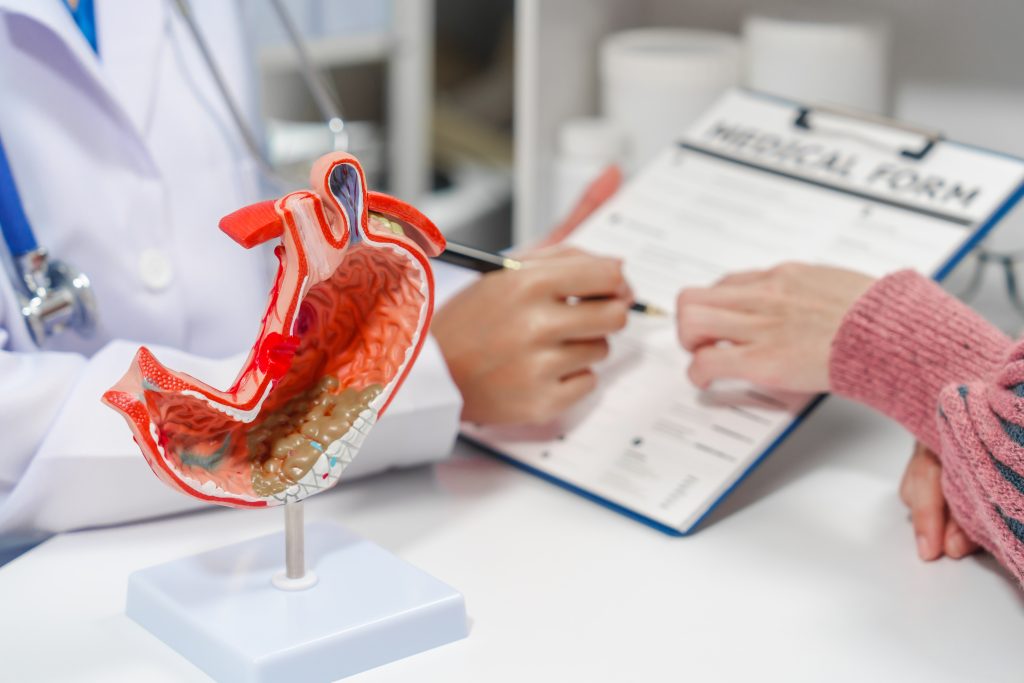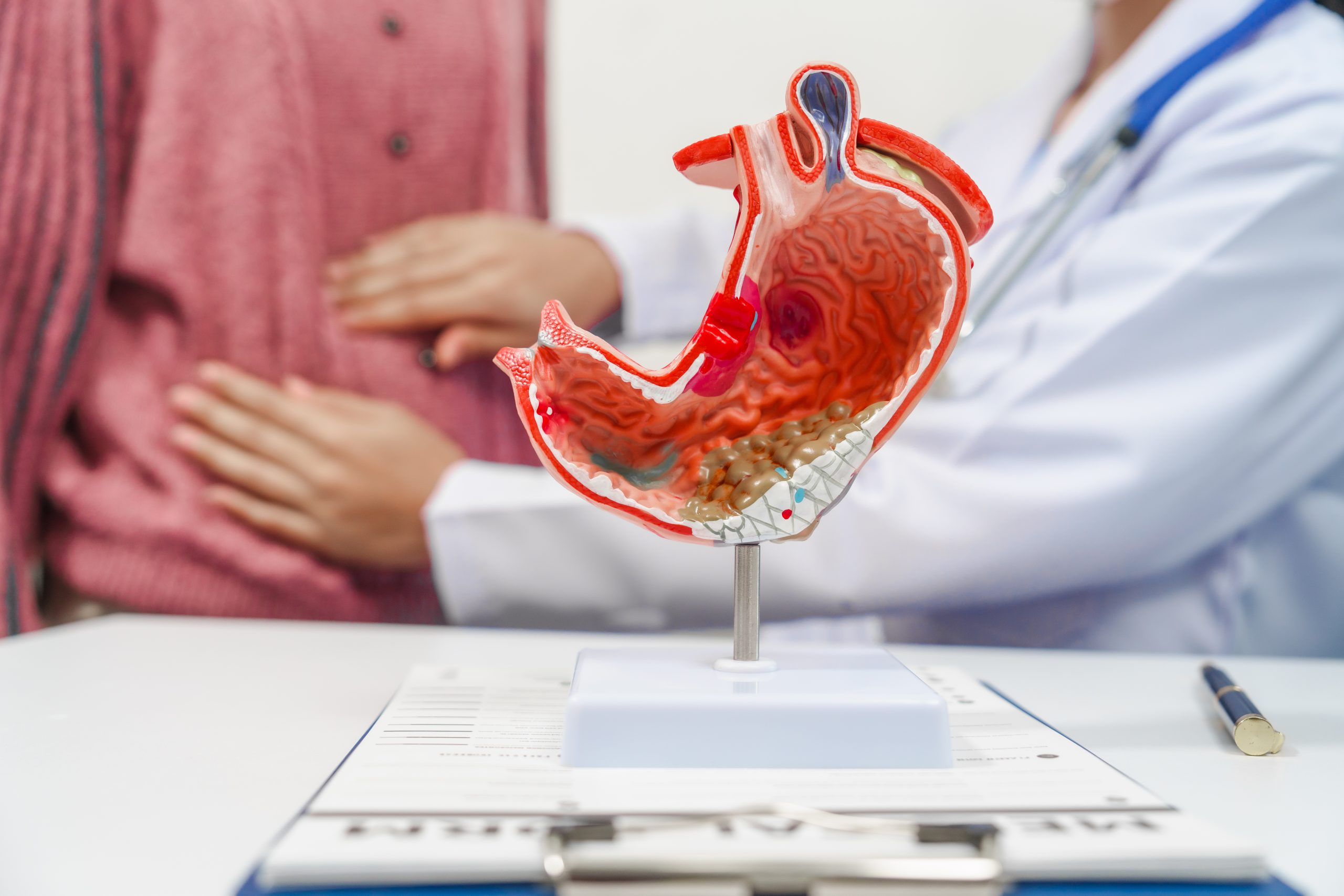Table of Contents
ToggleMany people experience sudden abdominal or side pain and wonder: Is it a gallstone or a kidney stone? Answering this question is a common concern for patients in Singapore and worldwide.
Both conditions are common and can cause intense discomfort; however, they affect different organs and require distinct treatment approaches. Understanding the difference between gallstones and kidney stones is the first step toward getting the right care.
Our guide breaks down the key differences in a clear, easy-to-follow format, helping you recognise the signs and understand your next steps.
Gallstones: What They Are and Where They Form
Gallstones are hardened deposits, usually made of excess cholesterol or a bile component called bilirubin, that form inside the gallbladder. Your gallbladder is a small, pear-shaped organ located just beneath your liver. Various risk factors can influence gallstone formation, including obesity, a diet high in fat, older age, pregnancy, and a family history of the condition.
Gallstones may exist for years without causing any issues (asymptomatic). However, problems arise when a stone blocks the flow of bile, leading to a painful condition known as biliary colic or a more serious gallbladder inflammation called cholecystitis.
Symptoms of Gallstones
The symptoms described below can be indicative of gallstones, but they may also point to other digestive issues. It is best to visit a gallstone doctor for an accurate diagnosis.
Gallstones may manifest with the following symptoms:
- Sudden and rapidly intensifying pain in the upper right or centre of your abdomen, often after a fatty meal.
- Nausea or vomiting.
- Pain that radiates to your right shoulder or between your shoulder blades.
- Bloating, indigestion, or burping.
- Jaundice (yellowing of the skin and eyes), which can occur in more severe cases if a gallstone blocks the main bile duct.
Kidney Stones: What They Are and Where They Form
Kidney stones are solid crystals formed from an accumulation of minerals and salts, such as calcium and oxalate, inside your kidneys.
Several factors can contribute to their formation, including persistent dehydration, a diet high in sodium or certain proteins, a family history of kidney stones, and some medical conditions or medications.
While a kidney stone may remain in the kidney without causing issues, severe pain and other symptoms often begin when it moves from the kidney and travels down the narrow tubes of the urinary tract (the ureters).
Symptoms of Kidney Stones
The following symptoms are common indicators of kidney stones. Because some signs may overlap with those of gallstones or other medical issues, a professional diagnosis is important to determine the correct cause of your discomfort.
Kidney stones may manifest with the following symptoms:
- Sharp, cramping pain in your side and back, below the ribs, which may spread to the lower abdomen and groin.
- Nausea and vomiting.
- A burning sensation or pain during urination.
- Urine that appears pink, red, or brown (haematuria, or blood in the urine).
- A persistent and frequent urge to urinate.
Gallstone vs Kidney Stone: Key Differences at a Glance
Distinguishing between gallstones and kidney stones can be difficult based on pain alone. For an accurate diagnosis and appropriate treatment plan, it’s always best to consult a medical professional who can properly evaluate your condition.
When comparing gallstones vs kidney stones, a few key differences stand out:
- Location of Pain: The main difference in gallstone pain vs kidney stone pain is location. Gallstone pain is typically felt in the upper right abdomen, while kidney stone pain usually starts in the side or back and radiates downwards.
- Organ System Involved: Gallstones form in the gallbladder, part of the digestive system. Kidney stones form in the kidneys, part of the urinary system.
- Associated Symptoms: Gallstones may cause digestive issues like indigestion, bloating, and jaundice (yellow skin). Kidney stone symptoms are often urinary, such as pain during urination or blood in the urine.
- Common Triggers: A gallstone attack is often triggered by eating a heavy, high-fat meal. Kidney stone pain can be triggered by dehydration or a diet high in stone-forming substances like oxalates.
- Diagnostic Tests: A specialist will typically use an abdominal ultrasound to diagnose gallstones, whereas kidney stones are more clearly identified using a CT scan or X-ray.
Diagnosis and Treatment Options
Because gallstones and kidney stones form in different systems of the body, the approaches to diagnosing and treating them are also distinct.
For Gallstones
An abdominal ultrasound is the most common and effective way to diagnose gallstones. If stones are found but are not causing any symptoms (“silent gallstones”), your doctor may recommend a ‘watch and wait’ approach, as no immediate treatment is usually needed.
For patients experiencing symptoms, various options for gallstone treatment are available in Singapore. While some medications can dissolve certain types of gallstones, the most definitive treatment is the surgical removal of the gallbladder, known as a cholecystectomy. Today, this is typically performed as a minimally invasive keyhole procedure, which is a common type of gallstone treatment.
For Kidney Stones
Kidney stones are typically diagnosed using a combination of urine tests and imaging scans, such as a CT scan, X-ray, or ultrasound. These tests help determine the size and location of the stone.
Treatment depends on the size of your gallstones. Small stones can often be passed naturally by drinking plenty of water, sometimes with the help of pain relief and medical therapy to relax the ureter. Larger stones that cannot pass on their own may require non-invasive lithotripsy (using shock waves to break up the stone) or surgical removal.
When to See a Specialist
It’s important to seek medical advice for a proper diagnosis if you experience severe or persistent symptoms. You should seek prompt medical evaluation for any of the following:
- Sudden, severe abdominal or side pain that does not go away.
- Recurrent episodes of pain after eating.
- Symptoms accompanied by a high fever or chills.
- Noticeable yellowing of your skin or eyes (jaundice).
- Visible blood in your urine.
Unsure if It’s Gallstones or Kidney Stones?

Because the symptoms can sometimes feel similar, self-diagnosis is not recommended. The only way to accurately determine the cause of your discomfort is through a personalised assessment with a medical professional who can perform the necessary diagnostic tests.
If you are experiencing persistent or severe abdominal pain in Singapore, don’t leave it to chance. An accurate diagnosis is the first step towards effective treatment and relief. Schedule a consultation with Dr Thng YongXian for a comprehensive evaluation and to receive the appropriate care for your specific condition.
